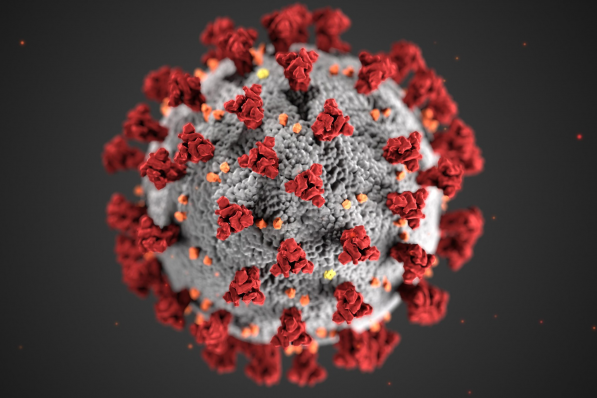EPFL is contributing significant computing resources to the open science project Folding@Home, which uses protein dynamics simulations to explore potential coronavirus drug targets.
Launched nearly 20 years ago, the international Folding@Home project invites volunteers to contribute computing resources to the simulation of protein dynamics. In late February, Folding@Home announced an effort to generate simulations aimed at providing insights into how the new coronavirus infects cells – and how the virus might be defeated.
Amir Zamir, a professor in the School of Computer and Communication Sciences (IC), initiated EPFL’s contribution to Folding@Home with one of his students, Alexander Sax, who was already familiar with the project. Thanks to systems engineer Yoann Moulin and computer scientist Carlos Perez of IC’s information technology team, SIFAC, EPFL has so far committed 100 32-gigabyte data center GPUs (graphics processing units) – “a serious contribution”, Zamir says – to the Folding@Home project.
Following the temporary closure of the EPFL campus due to coronavirus on March 16th, classroom and laboratory computers have gone unused. Fittingly, SIFAC has also harnessed some of these units for the simulation effort.
Simulating solutions
For proteins, form equals function. Their complex, multi-layered structures of amino acid chain building blocks imbue them with specific properties, and allow them to execute biological tasks. Understanding how proteins fold over on themselves to arrive at their final structure is key to understanding many diseases. That means that simulations of proteins are a precious resource that scientists can use to understand how pathogens like viruses infect their hosts, and to identify weaknesses that could be exploited with targeted therapies.
However, such simulations require computing power – and a lot of it. Through Folding@Home, computational resources are being harnessed to understand how a protein on the surface of a coronavirus cell, called a spike protein, interacts with a lung cell receptor. This information can help scientists develop so-called therapeutic antibodies, which interfere with the spike protein-receptor cell interaction, preventing infection. Such antibodies have already been developed for SARS-CoV, which will serve as a model for the simulation effort.
Thanks to the combined efforts of volunteers like those at EPFL, Folding@Home has recently reached an exaflop of computing power, putting it ahead of some of the world’s fastest supercomputers.
Tech for good
As of April 6th, SIFAC had completed over 8,500 Folding@Home work units (a measure of contribution to the coronavirus simulation project) in two weeks, making them one of the top 50 daily contributors out of nearly 250,000.
“It is safe to say that EPFL is one of the biggest academic contributors – if not the biggest academic contributor – of computing power to Folding@Home’s coronavirus effort,” Zamir says, referring to SIFAC’s position in the project’s daily rankings.
In addition to the IC school, other EPFL participants in Folding@Home include one student team, as well as EPFL’s Scientific IT and Application Support team, SCITAS. According to director Gilles Fourestey, SCITAS is contributing with the empty CPU (central processing unit) cycles of its computing cluster, and has thus far completed some 2,500 work units with more than 90 active CPUs.
Zamir adds that the provision of such a large amount of computing power by an academic institution is a singular accomplishment.
“Among the list of Folding@Home contributors there are few universities, which reflects the fact that most large computing resources are in the industrial sector. But EPFL is an outlier, and that’s a reflection of the fact that we have excellent, industry-grade computing resources.”
But the project team stresses that it’s not just about the numbers.
“What’s driving us is this idea of ‘tech for good’, and the fact that an institution like EPFL can really give back to society,” says SIFAC head Martial Challandes.



















